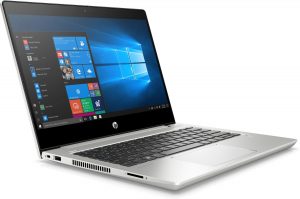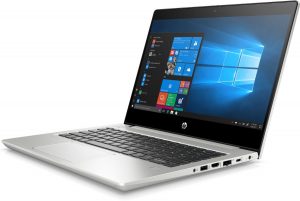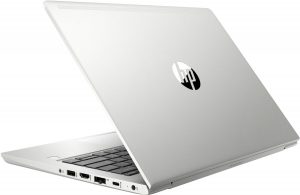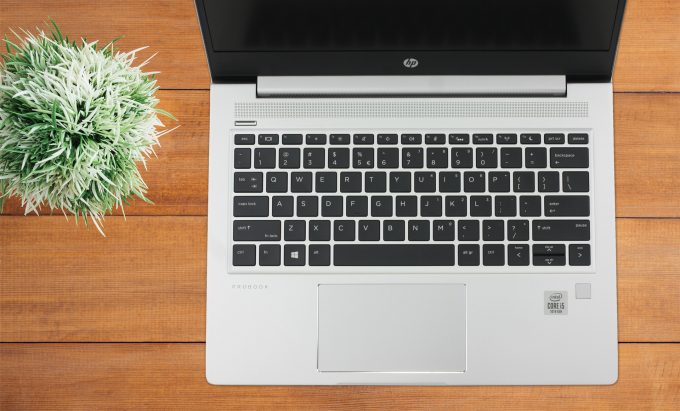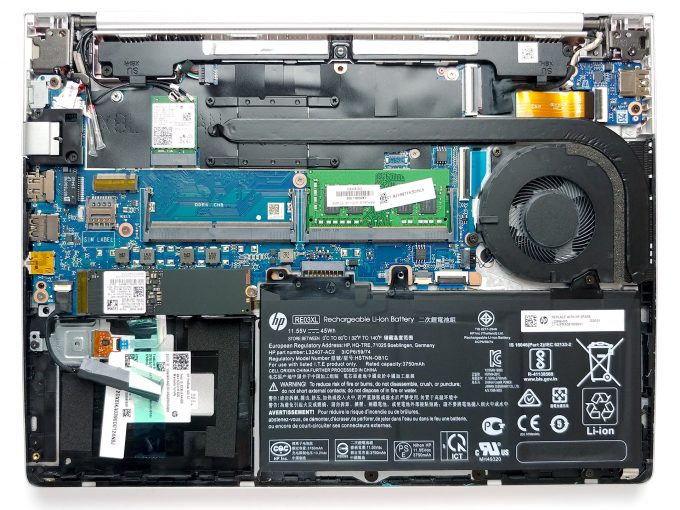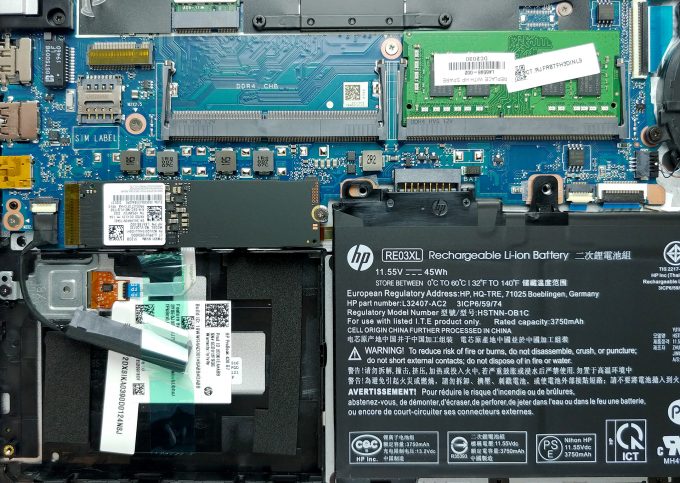HP ProBook 430 G7 review – the ultimate small business assistant
 Another day, another ProBook. This time, we got the 13-inch version of the 7th Generation of ProBook 400s. In terms of looks, it almost fully resembles its predecessor and similarly to its larger brothers, presents a slight upgrade on the hardware front.
Another day, another ProBook. This time, we got the 13-inch version of the 7th Generation of ProBook 400s. In terms of looks, it almost fully resembles its predecessor and similarly to its larger brothers, presents a slight upgrade on the hardware front.
This time, the laptop comes with a choice of a dual-core and two quad-core Comet Lake processors. Essentially, they should provide a marginal performance and efficiency boost over the Whiskey Lake devices.
Additionally, looking at the specs sheet, we see wide upgradability, as well as Wi-Fi 6 certification on some models. Last year, we said that having no Thunderbolt support is a downside, and it doesn’t seem like HP has “fixed” that on the new device. However, the presence of a Privacy Shutter, fingerprint reader, and all of the neat security goodies, both on the hardware and on the software side, means that business people would be highly motivated to get this device.
You can check the prices and configurations in our Specs System: https://laptopmedia.com/series/hp-probook-430-g7/
Contents
Specs Sheet
- HDD/SSD
- up to 1000GB SSD + up to 1000GB HDD
- M.2 Slot
- 1x 2280 M.2 NVMe slot See photo
- RAM
- up to 32GB
- OS
- Windows 10 Pro, Windows 10 Home, No OS
- Battery
- 45Wh, 3-cell
- Body material
- Plastic / Polycarbonate, Aluminum
- Dimensions
- 308.5 x 231 x 18 mm (12.15" x 9.09" x 0.71")
- Weight
- 1.49 kg (3.3 lbs)
- Ports and connectivity
- 2x USB Type-A
- 3.2 Gen 1 (5 Gbps)
- 1x USB Type-C
- 3.2 Gen 1 (5 Gbps), Power Delivery (PD), DisplayPort
- HDMI
- 1.4b
- Card reader
- SD, SDHC, SDXC
- Ethernet LAN
- 10, 100, 1000 Mbit/s
- Wi-Fi
- 802.11ax
- Bluetooth
- 5.0
- Audio jack
- 3.5 mm combo
- Features
- Fingerprint reader
- optional
- Web camera
- HD
- Backlit keyboard
- optional
- Microphone
- Speakers
- 2x 2W
- Optical drive
- Security Lock slot
All HP ProBook 430 G7 configurations
What’s in the box?
Inside the package, you’re going to find some paper manuals, as well as one of two types of chargers – a 45W and a 65W. Both of them can come with a barrel-style plug or a USB Type-C one – ask your retailer for more information about it before purchase.
Design and construction
As the rest of the ProBook 400 G7 family, the ProBook 430 G7 is built out of aluminum and plastic. The former is found on the lid, whereas the latter can be seen everywhere else. Interestingly, the device has a squarish footprint, making it slightly larger than most of the latest 13-inch laptops. In terms of weight, we are talking about 1.49 kg or 3.28 lb, while the height sits at 18mm. Overall, good portability, but definitely not the thinnest, nor the lightest 13-incher.
Now, opening the lid is possible with a single hand, and when you take a look at the top and bottom bezel, you’ll understand where all of the real estate comes from. This laptop has a bigger forehead than Neil Patrick Harris, as well as a sizeable chin to match the outfit. Thankfully, the side bezels are thin enough and there is a camera with a plastic shutter, housed above the display.
In terms of rigidity, both the lid and the base of this device are pretty sturdy. We tried flexing it with quite a lot of force, but it barely twisted.
Then, let’s take a quick look at the keyboard. First of all, it is a spill-resistant unit with an optional backlight. The finish on top of the keycaps is very pleasant to touch, and it has clicky feedback with decent key travel. We observed a small amount of keyboard flex, but it requires a lot of force in order to be visible. Above the keyboard deck, you’ll see a narrow but long speaker cutout, while beneath the deck, there is a pretty big (for a Windows device) touchpad. The gem in this notebook is the blazingly quick fingerprint reader, located beneath the “Right” arrow key.
When it comes to the touchpad, it is a pretty decent input device with a great gliding thanks to the supposed glass surface. It also supports multi-touch gestures and doesn’t require a whole lot of force to register clicks.
Lastly, there is only a ventilation grill on the bottom panel, while the hot air is exhausted from the left side.
Ports
This device’s I/O includes a USB Type-A 3.1 (Gen. 1) powered port and an SD card reader on the left, as well as a charging plug, a USB Type-C 3.1 (Gen. 1) with Power Delivery and DisplayPort output, an RJ-45 connector, an HDMI 1.4b connector, a USB Type-A 3.1 (Gen. 1) port and an audio jack on the right.
Disassembly, upgrade options and maintenance
Disassembling this device is pretty straightforward. There are 7 Phillips-head screws you need to remove and five of them will remain attached to the bottom panel after they are unscrewed. Then pry your way around the panel and lift the plate away.
Here, HP has gone for a single heat pipe. It is approximately five miles long and leads the heat to a heat sink with a relatively small size.
When it comes to the upgradability, though, you can see that this laptop has a lot to offer. Even though we are talking about a 13-inch notebook, you can put up to 32GB of DDR4 memory in dual-channel mode. Additionally, there is an M.2 slot for NVMe drives, and you can put a 2.5-inch SATA storage drive.
As you can see, the ProBook 430 G7 shares the same 45Wh battery with its 14 and 15-inch brothers.
Display quality
HP ProBook 430 G7 is equipped with a Full HD IPS panel, Chi Mei CMN139E. Its diagonal is 13.3-inch (33.78 cm), and the resolution – 1920 х 1080p. Additionally, the screen ratio is 16:9, the pixel density – 166 ppi, their pitch – 0.153 х 0.153 mm. The screen can be considered Retina when viewed from at least 53 cm (from this distance, the average human eye can’t see the individual pixels).
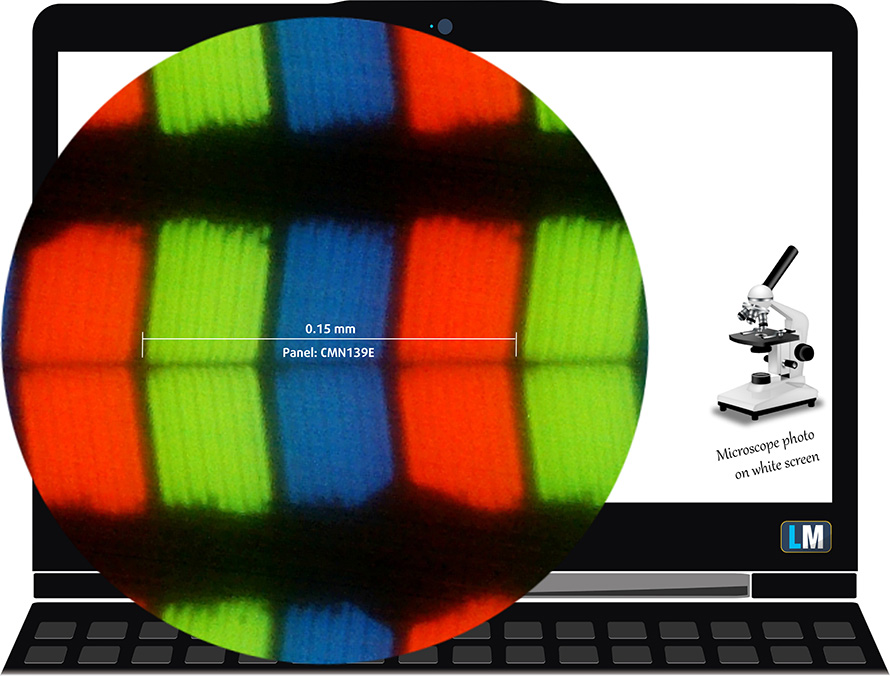
Viewing angles are excellent on this screen. We offer images at different angles to evaluate the quality.

The maximum measured brightness is 270 nits (cd/m2) in the middle of the screen and 260 nits (cd/m2) average across the surface with a maximum deviation of 6%. The Correlated Color Temperature on a white screen and at maximum brightness is 6400K – slightly warmer than the 6500K standard temperature for sRGB.
In the illustration below you can see how the display performs from uniformity perspective. The illustration below shows how matters are for operational brightness levels (approximately 140 nits) – in this particular case at 76% Brightness (White level = 142 cd/m2, Black level = 0.132 cd/m2).
Values of dE2000 over 4.0 should not occur, and this parameter is one of the first you should check if you intend to use the laptop for color-sensitive work (a maximum tolerance of 2.0 ). The contrast ratio is excellent – 1200:1.
To make sure we are on the same page, we would like to give you a little introduction to the sRGB color gamut and the Adobe RGB. To start, there’s the CIE 1976 Uniform Chromaticity Diagram that represents the visible specter of colors by the human eye, giving you a better perception of the color gamut coverage and the color accuracy.
Inside the black triangle, you will see the standard color gamut (sRGB) that is being used by millions of people in HDTV and on the web. As for the Adobe RGB, this is used in professional cameras, monitors, etc for printing. Basically, colors inside the black triangle are used by everyone and this is the essential part of the color quality and color accuracy of a mainstream notebook.
Still, we’ve included other color spaces like the famous DCI-P3 standard used by movie studios, as well as the digital UHD Rec.2020 standard. Rec.2020, however, is still a thing of the future and it’s difficult for today’s displays to cover that well. We’ve also included the so-called Michael Pointer gamut, or Pointer’s gamut, which represents the colors that naturally occur around us every day.
The yellow dotted line shows HP ProBook 430 G7’s color gamut coverage.
Its display covers 55% of the sRGB/ITU-R BT.709 (web/HDTV standard) in CIE1976.

Our “Design and Gaming” profile delivers optimal color temperature (6500K) at 140 cd/m2 luminance and sRGB gamma mode.
We tested the accuracy of the display with 24 commonly used colors like light and dark human skin, blue sky, green grass, orange, etc. You can check out the results at factory condition and also, with the “Design and Gaming” profile.
Below you can compare the scores of HP ProBook 430 G7 with the default settings (left), and with the “Gaming and Web design” profile (right).


The next figure shows how well the display is able to reproduce really dark parts of an image, which is essential when watching movies or playing games in low ambient light.
The left side of the image represents the display with stock settings, while the right one is with the “Gaming and Web Design” profile activated. On the horizontal axis, you will find the grayscale and on the vertical axis – the luminance of the display. On the two graphs below you can easily check for yourself how your display handles the darkest nuances but keep in mind that this also depends on the settings of your current display, the calibration, the viewing angle, and the surrounding light conditions.

Response time (Gaming capabilities)
We test the reaction time of the pixels with the usual “black-to-white” and “white-to-black” method from 10% to 90% and vice versa.
We recorded Fall Time + Rise Time = 22 ms.

Health impact – PWM / Blue Light
PWM (Screen flickering)
Pulse-width modulation (PWM) is an easy way to control monitor brightness. When you lower the brightness, the light intensity of the backlight is not lowered, but instead turned off and on by the electronics with a frequency indistinguishable to the human eye. In these light impulses, the light/no-light time ratio varies, while brightness remains unchanged, which is harmful to your eyes. You can read more about that in our dedicated article on PWM.
HP ProBook 430 G7’s display doesn’t use PWM at all. This makes it comfortable for long periods of use, without presenting any harm to your eyes and brain in this aspect.

Blue light emissions
Installing our Health-Guard profile not only eliminates PWM but also reduces the harmful Blue Light emissions while keeping the colors of the screen perceptually accurate. If you’re not familiar with the Blue light, the TL;DR version is – emissions that negatively affect your eyes, skin, and your whole body. You can find more information about that in our dedicated article on Blue Light.
Conclusion
HP ProBook 430 G7’s display has an IPS panel with a Full HD resolution, good contrast ratio, and comfortable viewing angles. Additionally, its backlight doesn’t flicker at any brightness level. Its only disadvantage is the modest color coverage.
Buy our profiles
Since our profiles are tailored for each individual display model, this article and its respective profile package are meant for HP ProBook 430 G7 configurations with 13.3″ Chi Mei CMN139E (FHD, 1920 × 1080) IPS panel.
*Should you have problems with downloading the purchased file, try using a different browser to open the link you’ll receive via e-mail. If the download target is a .php file instead of an archive, change the file extension to .zip or contact us at [email protected].
Read more about the profiles HERE.
In addition to receiving efficient and health-friendly profiles, by buying LaptopMedia's products you also support the development of our labs, where we test devices in order to produce the most objective reviews possible.

Office Work
Office Work should be used mostly by users who spend most of the time looking at pieces of text, tables or just surfing. This profile aims to deliver better distinctness and clarity by keeping a flat gamma curve (2.20), native color temperature and perceptually accurate colors.

Design and Gaming
This profile is aimed at designers who work with colors professionally, and for games and movies as well. Design and Gaming takes display panels to their limits, making them as accurate as possible in the sRGB IEC61966-2-1 standard for Web and HDTV, at white point D65.

Health-Guard
Health-Guard eliminates the harmful Pulse-Width Modulation (PWM) and reduces the negative Blue Light which affects our eyes and body. Since it’s custom tailored for every panel, it manages to keep the colors perceptually accurate. Health-Guard simulates paper so the pressure on the eyes is greatly reduced.
Get all 3 profiles with 33% discount
Sound
HP ProBook 430 G7’s front-firing speakers produce a loud and clear sound. Its low, mid, and high tones are clear of deviations.

Drivers
All of the drivers and utilities for this notebook can be found here: https://support.hp.com/us-en/drivers/selfservice/hp-probook-430-g7-notebook-pc/29060970
Battery
Now, we conduct the battery tests with Windows Better performance setting turned on, screen brightness adjusted to 120 nits, and all other programs turned off except for the one we are testing the notebook with. This device has a 45Wh battery on board.
In terms of battery life, we got slightly more than 10 hours of Web browsing and around 9 hours and a half of video playback. This means the laptop should comfortably last an entire workday on a single charge.
In order to simulate real-life conditions, we used our own script for automatic web browsing through over 70 websites.
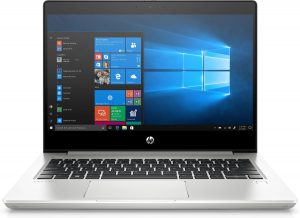
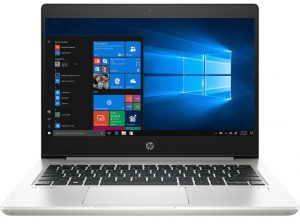
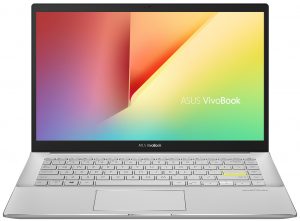
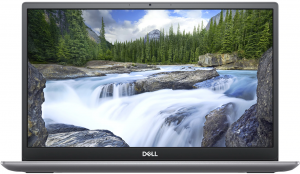
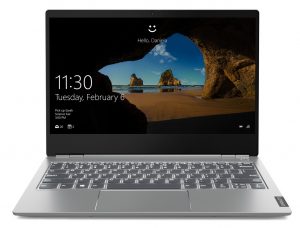
For every test like this, we use the same video in HD.





CPU options
Comet Lake is the lineup of choice here. You can get the Core i3-10110U, the Core i5-10210U, and the Core i7-10510U, which are all decent options for a 13-inch business notebook.
Results are from the Cinebench 20 CPU test (the higher the score, the better)
Results are from our Photoshop benchmark test (the lower the score, the better)
GPU options
As of the graphics options – there are no options really – just the Intel UHD Graphics integrated into all of the aforementioned processors.
Results are from the 3DMark: Time Spy (Graphics) benchmark (higher the score, the better)
Results are from the 3DMark: Fire Strike (Graphics) benchmark (higher the score, the better)
Results are from the Unigine Superposition benchmark (higher the score, the better)
Gaming tests

| CS:GO | HD 1080p, Low (Check settings) | HD 1080p, Medium (Check settings) | HD 1080p, MAX (Check settings) |
|---|---|---|---|
| Average FPS | 33 fps | 20 fps | – fps |

| DOTA 2 | HD 1080p, Low (Check settings) | HD 1080p, Normal (Check settings) | HD 1080p, High (Check settings) |
|---|---|---|---|
| Average FPS | 59 fps | 29 fps | – fps |
Temperatures and comfort
Max CPU load
In this test we use 100% on the CPU cores, monitoring their frequencies and chip temperature. The first column shows a computer’s reaction to a short load (2-10 seconds), the second column simulates a serious task (between 15 and 30 seconds), and the third column is a good indicator of how good the laptop is for long loads such as video rendering.
Average core frequency (base frequency + X); CPU temp.
| Intel Core i5-10210U (15W TDP) | 0:02 – 0:10 sec | 0:15 – 0:30 sec | 10:00 – 15:00 min |
|---|---|---|---|
| HP ProBook 430 G7 | 2.59 GHz (B+62%) @ 71°C | 2.46 GHz (B+54%) @ 78°C | 2.07 GHz (B+29%) @ 74°C |
| Lenovo ThinkPad E15 | 2.47 GHz (B+54%) @ 76°C | 2.50 GHz (B+56%) @ 91°C | 1.97 GHz (B+23%) @ 79°C |
| HP Probook 450 G7 | 2.54 GHz (B+59%) @ 59°C | 2.12 GHz (B+33%) @ 67°C | 1.81 GHz (B+13%) @ 72°C |
| HP Probook 440 G7 | 2.68 GHz (B+68%) @ 59°C | 2.68 GHz (B+68%) @ 67°C | 2.20 GHz (B+38%) @ 72°C |
| Lenovo ThinkBook 15-IML | 3.08 GHz (B+93%) @ 73°C | 3.00 GHz (B+88%) @ 82°C | 2.55 GHz (B+59%) @ 80°C |
| Lenovo ThinkPad L13 | 3.04 GHz (B+90%) @ 97°C | 2.10 GHz (B+31%) @ 97°C | 2.12 GHz (B+33%) @ 79°C |
| ASUS ZenBook Duo UX481 | 3.26 GHz (B+104%) @ 94°C | 2.77 GHz (B+73%) @ 98°C | 2.06 GHz (B+29%) @ 71°C |
| Dell Vostro 5590 | 3.50 GHz (B+119%) @ 94°C | 2.68 GHz (B+68%) @ 97°C | 2.36 GHz (B+48%) @ 79°C |
Once again, the ProBook 430 G7 uses a modest power curve, which provides a clock speed of around 2.50 GHz for no more than 40 seconds, when the frequency drops down to 2.07 GHz at 15W. While the temperatures look worse than that of the 14-inch ProBook, they are still fine for a 13-inch business notebook.
Comfort during full load
The fan on this machine is not really loud under load. However, it is clearly audible and turns on even when you transfer files or during program installation.


Verdict
 Once again, HP has produced a strong ProBook 13-incher. While it is largely unchanged from last year, it is good that the manufacturer was able to maintain the performance in almost every department. Interestingly, the new chipset wasn’t able to provide a better performance, neither it could deliver a better battery life. This is quite interesting. Last year, the sixth generation of the ProBook 430 was able to last almost 12 hours during Web browsing, whereas this year’s model goes for “only” 10 hours.
Once again, HP has produced a strong ProBook 13-incher. While it is largely unchanged from last year, it is good that the manufacturer was able to maintain the performance in almost every department. Interestingly, the new chipset wasn’t able to provide a better performance, neither it could deliver a better battery life. This is quite interesting. Last year, the sixth generation of the ProBook 430 was able to last almost 12 hours during Web browsing, whereas this year’s model goes for “only” 10 hours.
Thankfully, there are some improvements in the display-side. HP ProBook 430 G7’s display has an IPS panel with a Full HD resolution, good contrast ratio, and comfortable viewing angles. Additionally, its backlight doesn’t flicker at any brightness level. Its only disadvantage is the modest color coverage. Although this looks pretty much on par with last year’s notebook, the ProBook 430 G7 almost matches the 6500K color temperature and has a slightly higher maximum brightness.
Add the Wi-Fi 6 certification to the mix, and you get a pretty decent package all round. By the way, the biggest selling point for this notebook would be its security features. They are uniform across all of the ProBoom laptops, but most importantly, they provide the needed privacy for a business notebook. And, let’s not forget the upgradability – up to 32GB in dual-channel, NVMe drive support, and something that is rarely seen on a 13-inch laptop in 2020 – a 2.5″ SATA storage option.
At the end of the day, we would love to give this device an Editor’s Choice award. However, the continuity from last year prevents us to do so, as it prevents us to recommend it over its predecessor.
Pros
- Spill-resistant (optionally) backlit keyboard
- Decent build quality
- Good battery life
- Upgradability is on point and its parts are easy to access
- Doesn’t use PWM to adjust its brightness levels (Chie Mei CMN1375)
- Comfortable viewing angles and good contrast ratio
Cons
- No Thunderbolt support
- Covers only 55% of sRGB (Chie Mei CMN1375)
- Only a refreshed copy of its predecessor
You can check the prices and configurations in our Specs System: https://laptopmedia.com/series/hp-probook-430-g7/

